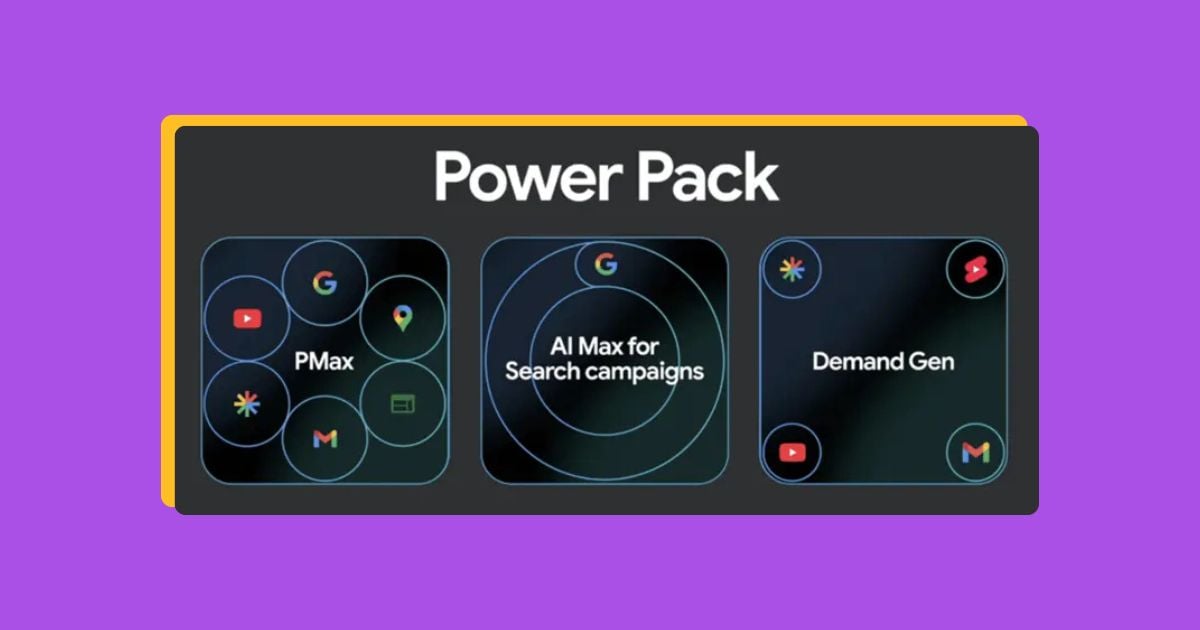Increased competition, AI-driven automation, privacy updates, and evolving consumer behaviors demand that your Google Ads ads be at the top of their game. And that can only come from writing ads that use precise, compelling, and data-driven ad copy.
In this article, we’re going to share everything you need to know to write Google Ads that maximize visibility, clicks, and conversions while optimizing your ad spend.
Contents
- Technical guidelines for writing Google Ads
- Google Ads copy best practices
- Tips and tricks for writing the best Google Ads
- Google Ads copy examples
- Tools to help your ad copywriting
Guidelines for writing Google Ads in 2026
Google Ads offers a few different ad formats, so let’s first get acquainted with headlines, descriptions, character counts, and the like.
Responsive Search Ads (RSAs)
- Headlines: Up to 15 headlines, 30 characters max
- Descriptions: Up to four descriptions, 90 characters max

Responsive Search Ads can be tricky. Use our Responsive Search Ad template for help managing the combinations without pulling your hair out.
Responsive Display Ads
- Short headlines: Up to five, up to 30 characters each
- Long headline: One, up to 90 characters
- Descriptions: Up to five, up to 90 characters each
- Business name: Up to 25 characters
- Images: Up to 15 different images
- Logos: Up to five different logos
Performance Max Campaigns
- Headlines: Up to five, 30 characters max
- Long headlines: Up to 90 characters
- Description: One 60-character description (required)
- Long descriptions: 1-4 descriptions, up to 90 characters each
- Business name: Up to 25 characters
Call Ads
- Headlines: Up to 2, each with a maximum of 30 characters.
- Descriptions: Up to 2, each allowing up to 90 characters.
- Business name: Up to 25 characters.
- Display path: Up to 15 characters.
💡 For more help planning out your Google Ads copy strategy, download our free, complete guide to the perfect Google Ads account structure.
Best practices for writing Google Ads
Here are some fundamental best practices for writing super-effective Google Ads.
Prioritize relevance
The Google Ads algorithm is all about relevance. Make sure your ad copy is super relevant to your keywords and that your landing page is super relevant to your ads. The more continuity there is, the better.
Use keywords in headlines for better visibility
This helps with relevancy, allowing you to match search intent, boost Quality Score (which can lower CPC), and increase CTR. Two quick tips:
- See if you can use long-tail keywords for high-intent searches. For example, “best metal roof installers for storm protection.”
- For shorter keywords, place them at the beginning of the headline to ensure visibility.
Use ad assets
Use various ad assets (formerly called “extensions”) to provide additional information and links, enhancing ad relevance and performance.
Popular ones include structured snippets, price, lead forms, sitelinks, location, and call assets.

Call asset example
A/B test
Even with responsive search ads doing the mixing and matching for you, you should still be testing different approaches with your ads. You may even separate them into different campaigns based on an overall theme. After all, you only get so much visibility into the performance of each ad combination within a single RSA campaign.
Some things to test include:
- Short vs. long-tail keywords
- Direct vs. benefit-driven phrasing
- Urgency-focused vs. informational headlines
⚡ Create ad copy that increases your Quality Score fast for a cheaper CPC with our free guide to saving money in Google Ads!
Tricks for writing high-performing Google Ads
It’s one thing to follow best practices for Google Ads. It’s another to write exceptional Google ads. Here are the techniques to employ, that go beyond best practices, to help you maximize conversions.
Copywriting tricks
Ah, copywriting. I’m in my natural habitat here. I could go on for days, but I’ll keep it short:
- Use emotion for high-performing headlines. We’ve got over 130 emotional words and phrases for you to browse through, plus these examples of emotional ad copy to inspire you.
- Use psychological techniques to boost CTR. There are several ways to use psychology in your ad copy. You can appeal to moral values, scarcity, repetition, hyperbole, and more.
- Use social proof. Leverage testimonial quotes and stats to convey to your audience that others are happy with your product or service. This is the most powerful tool at your disposal.
- Use power words. Pair your keywords with power words. Examples include “exclusive,” “proven,” “award-winning,” “instant,” “guaranteed,” and “effortless.”
- Offer the right balance. Use our responsive ad copy template to make sure you’re using the right mix of features, benefits, and pain points.
- Offer an incentive. The best way to stand out is to offer some sort of tangible incentive, like a discount, a free offer, or a high-demand feature.

Nothing like a little fear-based copy about overpaying to complete your Google ad copy.
For more resources on copywriting, check out these posts:
CTA tricks
The more specific you are with your call to action, the better. Another pro tip: Tailor your CTA for the intent of your audience. For example:
- Top of funnel: Learn More, See How It Works, Get the Guide, Explore Solutions
- Middle: Start Your Free Trial, Compare Plans, See Pricing, Schedule a Consult, Book a Demo
- Bottom: Talk to an Expert Now, Get Started Now, Sign Up & Save 20%, Order Now & Get Half Off,

“Get dental implants in one day” is highly specific. Plus, this example has a nice nod to the importance of experience.
Keyword tricks
Try dynamic keyword insertion. This feature will automatically insert the exact search term into the headline. For example: “{KeyWord: Custom Window Installation} – Get a Free Quote.”
But you need to be careful with your template for this one because you can get some awkward phrasing. For example “Need Fix Leaky Faucet Myself? Call Now!” or “Get Cheap Roofing Companies Near Me.” These will convey carelessness and disingenuousness (sidenote: wow, I thought for sure autocorrect was going to tell me this isn’t a word. I’m pumped).
Targeting tricks
With some Google Ads campaign types (Performance Max especially), you can upload customer lists, email lists, CRM data, past purchase behavior, and more for more precise targeting and therefore more precise ad copy. What’s more, this is all first-party data, which is accurate, privacy-compliant, and insight-rich. Here are some examples:
- Existing customers → cross-sell to existing customers, promote a special offer to VIP customers, reengage dormant customers
- Existing leads → win back old leads who visited your website or who booked a demo but never closed
- Website visitors → retarget people based on pages they visited or cart behavior
Well-written Google Ads copy examples
Here are some examples of Google Ads that employ the best practices and techniques we’ve covered:
Ballin Law: CTA (get a free consultation), urgency (see how much your case may be worth in minutes), power words (award-winning), incentive (pay nothing until you win).

Marshall Building and Remodeling. Sitelink assets, power words (award-winning), CTA (get a quote), benefits (keep the wet and windy weather out), incentive ($0 down and free consultations).

Sarah Davis MD. Feature-heavy (affordable, same-day appointments, multilingual staff), sitelink asset.

ServiceTitan. Benefit focus (get paid faster, grow your business, accelerate success, deliver amazing service), CTA (book a free demo), features (QB compatible, mobile app).

Intuit QuickBooks. Social proof (89% of customers agree), benefit (get a clear view of your finances).

Tools to write Google Ads
Let’s finish off with some tools to help you in your quest to write great Google Ads.
Keyword tools
With the Free Keyword Tool from WordStream, enter seed keywords or even a URL into the search bar, and you’ll get a list of related terms, including monthly search volumes and competition levels. It’s pretty easy to spot those high-volume, low-competition keyword unicorns.
The Google Ads Keyword Planner is also a free tool that helps you discover relevant keywords and analyze search volume, competition, and estimated CPC.
Ad assessment tools
With WordStream’s Free Google Ads Grader, you’ll get a free assessment of the performance of your Google Ads against 10 key metrics, with actionable insights to help you improve your Quality Score, reduce wasted spend, and maintain impression share. You can catch more free Google Ads tools here.
Competitive research tools
With tools like Semrush and Ahrefs, you can analyze your competitors’ keywords, ad copy, and bidding strategies to help inform your strategy. They also offer keyword research capabilities, surfacing volume, competition, costs, and other trends.
Copywriting tools
AI copywriting tools like ChatGPT and Copy.ai can be super helpful for coming up with ideas for ad copy, refining copy you’ve already written, or reframing your copy for different techniques or emotions. Just remember to use these tools as a sidekick to your ad copywriting endeavors and not as a substitute for strategic thinking, brand voice consistency, and human creativity.
You can also try LocaliQ’s Google Ads AI Copy Tool to get headlines and descriptions to test in your Google Ads. Always review and tweak AI-generated Google Ads copy to ensure it aligns with your campaign goals and resonates with your audience. You can start out using AI to write your Google Ads with these AI prompts.

Write great Google Ads in 2026
Writing high-performing Google Ads in 2026 requires a mix of technical precision, strategic messaging, and creativity. By following the best practices and tips in this post and using the tools we recommended, you can craft ads that maximize visibility, clicks, and conversions while keeping costs in check.
Now it’s time to put these strategies into action! Remember, great ads don’t just get seen; they get results. For more help maximizing your Google Ads copy results, see how our solutions can streamline your ad copywriting and optimize your campaign performance in 2026 and beyond.






